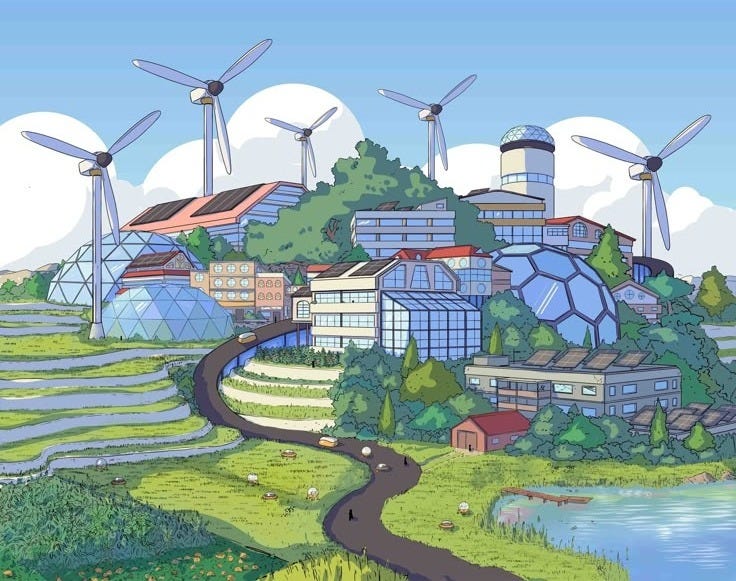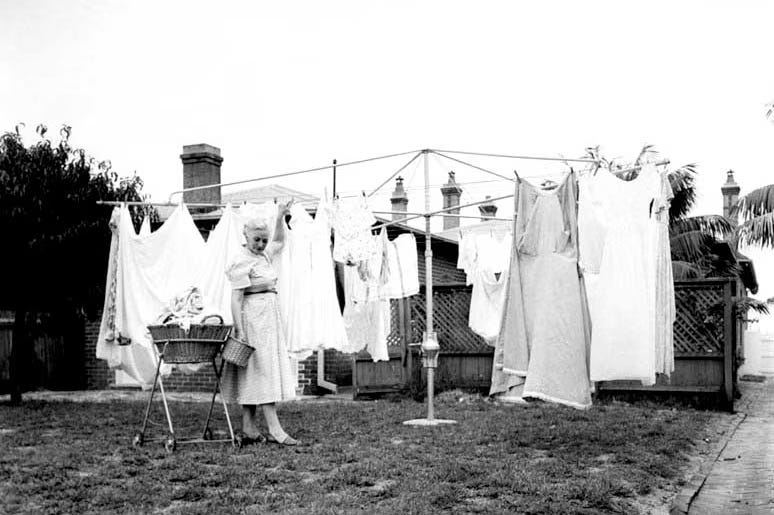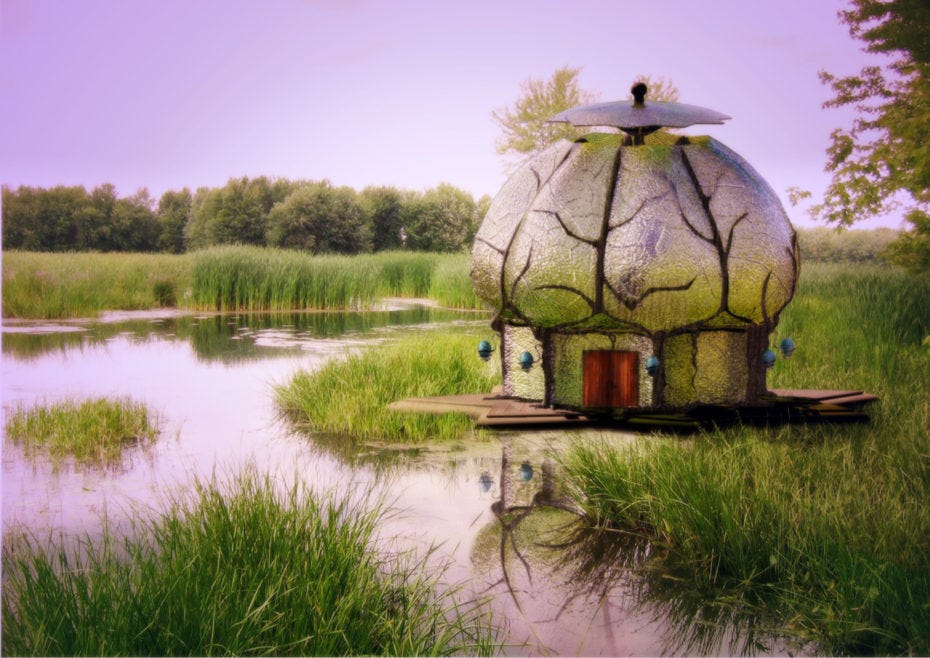Solarpunk: A revolt of hope against despair
In the first of a three part series on Solarpunk, I'll lay out the basic tenets of the movement
In 2008, a blogger made a post titled From Steampunk to Solarpunk that would become the seed for the most punk movement yet. Resisting the technological determinism and nihilism of Cyberpunk and rejecting the euro-centric and human-centric vision of Steampunk, this movement rebels against the greed and ecocidal paradigm of our current age. It rails against the repressive future forced upon us by failed democratic states, profiteering corporations, and a spoiled biosphere, instead daring to imagine what a world we actually want to live in looks like.
The post began, “For a while now, I’ve had the thought that an economy based on renewable energy might return to using sailing ships as working cargo ships.”
The author of the blog explained it this way: if Steampunk imagines a world where steam technology wasn’t pushed aside by oil-based technologies, Solarpunk imagines a world where oil can no longer be considered a cheap source of energy and we have to rely on other sources like solar and wind power. While this conceptualization was based on modern economics, Solarpunk has since grown into a global movement and given us the strongest foothold to combat eco-anxiety and despair yet.
Through Solarpunk stories, we can conceive of a world of human and ecological interconnectedness and reciprocity, where technology is used to foster a culture of abundance instead of being monopolized by the few who profit off of artificial scarcity. It’s more than just sci-fi, Solarpunk asks what do we want the world to look like and how do we get there.
The best part about Solarpunk? It’s based on current day technologies, rejecting the dependence on imaginary future technologies to save us. This can mean high-tech solutions like 3D printing and solar glass windows, but conversely, it can be as low-tech as using clotheslines instead of dryers and planting a community garden.
In fact, the core tenets of the Solarpunk movement reflect land stewardship practices propagated by centuries-old indigenous groups. And although the virtual Solarpunk community is dominated by westerners, there are many people living in ways far more symbiotic with nature in the Global South that are oblivious to the Solarpunk label yet fall under its umbrella.
It’s not a movement for those who have the time, resources, and propensity for reading economic and political theory. Solarpunk is about people doing what needs to be done in the face of adversity.
The Aesthetic
The art usually associated with Solarpunk features biophilic design, incorporating nature into man-made spaces and treating human contact with nature as a basic need instead of a luxury. We see biophilic design in cities today where there are green spaces, rooftop gardens, and car-free districts. However, we must look at these existing places with a critical eye. Are they accessible to everyone or blocked off to the poor? As Elvia Wilk said, “Pleasant green architecture means nothing if it becomes an extension of colonialist fantasy.”
This example illustrates the limits of an aesthetic perfectly. Yes, appealing imagery is critical for attracting people and getting them to engage with the substance that underpins it. But we must be wary of vapid imitations and those who seek to co-opt the visuals associated with Solarpunk only to profit off of them.
At the same time, we can derive some comfort from what one Solarpunk adherent, Jay Springett, said, “You can’t LARP Solarpunk because LARPing Solarpunk is going out and planting a garden.” This is perhaps the biggest difference between fans of Solarpunk and the other -punk movements. It’s a movement, not just art.
Another difference is that Solarpunks can reap the benefits of their vision today. By taking steps to reconcile society with the natural world, individuals are already living in a Solarpunk reality. As one person put it, Solarpunk is utopianist if utopia is taken as a constant process of approximating an ideal. It’s about the journey, not just the result. Or in Eduardo Galeano’s words, “Utopia is on the horizon. I walk two steps, it moves two steps away and the horizon runs ten steps further. So, what is utopia? That’s what it’s for, it’s for walking.”
A statement in the wiki of r/solarpunk subreddit emphasizes, “The only reason why we don’t live in a solarpunk world right now is because no one has bothered to make it yet. We’ll have to make it ourselves, and we’ll have to help each other make it.” But is this true?
Reject Dystopia
Solarpunk envisions a world beyond false dichotomies. It seeks a middle ground between individualism and collectivism where there is both healthy individuality and communal solidarity. It demands that we work in ways that center the health of the planet and create a society in which every lifeform has their needs met.
But when we exercise our ability to imagine a future like this, it puts the pressure on corporate and government leaders to explain why we don’t have a world like that already. And they don’t take kindly to the suggestion that we do away with the systems that brought them the power they have today.

Striving for a future beyond scarcity and hierarchy, for abundance of the commons, naturally makes enemies. In the 2008 article that coined the term Solarpunk, the author wrote, “It’s very unlikely that a transition to renewables can be accomplished without serious political fights between the good citizens of the world and corrupt forces attempting to advance their own personal gain.”
Solarpunk narratives that grapple with the link between energy and, therefore, the cultural changes that will take place as we transition to a renewables future will serve as a roadmap for activists in real life trying to shepherd these changes along.
What can shield Solarpunk activists from reprisal as they try to enact change? Self-reliance and communal resilience. Planting a food lawn instead of a monoculture is Solarpunk. Co-ops are Solarpunk. Libraries of things are Solarpunk. Altering our social habits to be more collaborative and inclusive is Solarpunk. Isolationism is not Solarpunk, no matter how sustainable your individual habits might be. Embrace the idea of communal infrastructure as a point of resistance.
Plant the Seeds of Change
In a media landscape flooded with apocalyptic imagery, there’s value in challenging ourselves to imagine what it would be like if things go right instead of wrong. One group coined the term imagination activism to describe the power of seeing the world in this way. The key is expanding our imagination of what society is capable of. This is the remedy to eco-anxiety and despair. Imagine people as more than just destroyers.
It can give inspiration to those in creative professions that question what they’re doing in the face of a planetary crisis. Rebel today by re-imagining tomorrow. The vision we craft will fuel our desire, inform strategy, and provide structure and guidance for building the future. This vision can be expressed through visual arts, literature, and music, but also in political terms. Solarpunk housing is as important as Solarpunk fashion.
By taking diverse yet aligned movements and including them under the Solarpunk umbrella, we can foster solidarity and cohesion amongst them. To effect real change, we must work both within and from outside the system. Engage in local politics. Participate in mutual aid networks. Plant a community garden. Organize a clothing swap with your friends.
Not only has solar power become drastically cheaper and more accessible in recent years, we are also on the cusp of so many technological advancements that, with enough effort, can create the world we dream of. There’s a choice other than denial and depression. It’s hope. It’s Solarpunk.
As exhilarating as the Solarpunk vision is, let’s wrap this up on an important warning. Hope is not a replacement for strategy. Without vision, strategy, and participation, hope can be as powerful an opiate as defeatism. Remember that the technology we need for Solarpunk already exists. What’s missing is the political will to create the future we dream of.










Seems like now more than ever there is no political will to change. It’s so sad.